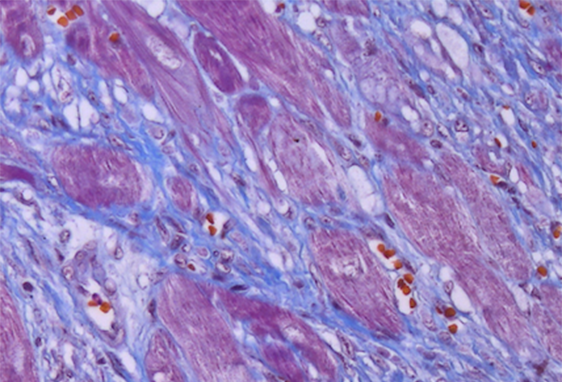In cardiac tissues of myocardial infarction, fibrotic tissue replaces a defect of cardiomyocytes, and maintains organ structure. However, excessive fibrosis impairs ventricular relaxation, leading to a life-threatening heart disease termed as diastolic heart failure or heart failure with preserved ejection fraction. Therefore, it is critically important to understand the molecular processes by which tissue fibroblast is activated.
We have investigated the roles of hypoxia or ischemic environment in fibroblast activation. Molecular oxygen has been considered as an essential gas which is required in generating ATP and cell survival. We, however, found that fibroblasts or macrophages can survive in hypoxia condition. Surprisingly, these interstitial cells are even more activated in the ischemic area, which is contradictory to our current understanding that we cannot survive without oxygen or nutrient (AJRCMB 2018;58:216, Int Heart J 2019;60:958). We call the paradoxical behavior of interstitial cells as “Oxygen paradox”. We are currently trying to identify the molecular pathways those are working in oxygen paradox of interstitial cells, especially by monitoring the intracellular distribution or the dynamics of ATP and nicotinamide adenine dinucleotide (NAD).

RESEARCH
研究プロジェクト
Oxygen paradox